
24.02.2018
China will accelerate research and commercial use of rocket upper stages, a carrier rocket official said on Friday.
"The Yuanzheng rocket upper stage family will have a new member, Yuanzheng-1S, this year, serving launches for low and medium Earth orbit satellites," said Wang Mingzhe, an upper stage architect of the China Academy of Launch Vehicle Technology (CALT).
Upper stages are independent aircraft installed on the carrier rocket that are capable of restarting their engines multiple times in space to allow them to send different payloads to varying orbits.
Earlier this month, China's Yuanzheng-1 rocket upper stage helped send two satellites into orbit on a single carrier rocket for its domestic BeiDou Navigation Satellite System in Xichang in southwest China's Sichuan Province.
China began to develop upper stage spacecraft in the 1980s, according to a report released by CALT. The first mission took place in March 2015 involving the Yuanzheng-1, which can perform two ignitions and operate for 6.5 hours.
Over the past three years, the Yuanzheng upper stage family has gained two members, Yuanzheng-1A and Yuanzheng-2, which are capable of up to 20 engine restarts and multiple spacecraft separation events.
"In addition to putting satellites into position, the Yuanzheng upper stage family is also able to monitor the space environment and send data back to Earth, which can help gain experience for future aircraft design," said Ye Chengmin, the vice chief architect for upper stages with CALT.
An upper stage is designed to operate at high altitude. Currently, China's three Yuanzheng upper stages all feature medium- and high-orbit missions.
Wang Mingzhe said there is growing demand for putting upper stages into commercial use, such as using them as launch vehicles to send small payloads into low and medium orbits. The new model Yuanzheng-1S will be a simplified version to cater to these needs.
"Compared with the long flight time of three other models, Yuanzheng-1S needs to finish its mission within one hour. This takes a lot of upgrading, such as streamlining systems to make this version more economical and efficient," said Wang.
Yuanzheng-1S is scheduled to be used for launches to Sun-synchronous orbits atop a Long March 2C carrier rocket in 2018.
Wang said that upper stages are expected to play a huge role in future moon and Mars exploration as well as orbital transfer and the clearing of space debris.
Quelle: Xinhua
---
Update: 25.02.2018
.
China speeds up research, commercialization of space shuttles
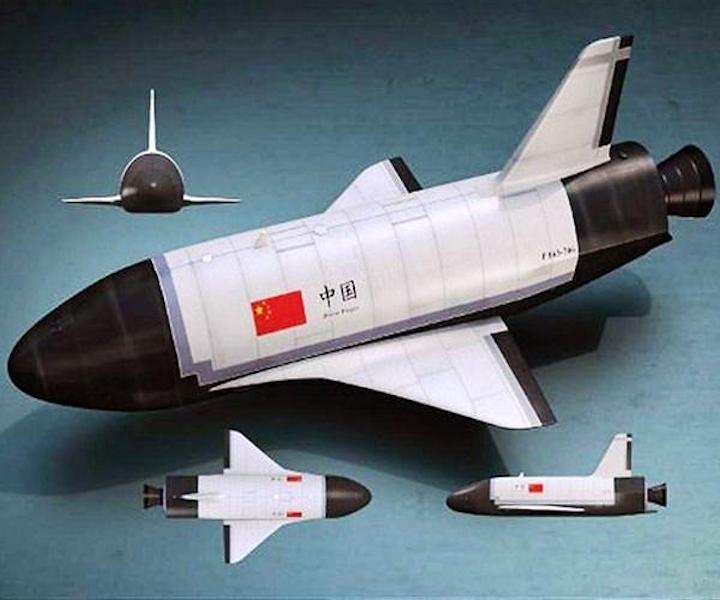
China will accelerate research and commercial use of rocket upper stages, a carrier rocket official said on Friday.
"The Yuanzheng rocket upper stage family will have a new member, Yuanzheng-1S, this year, serving launches for low and medium Earth orbit satellites," said Wang Mingzhe, an upper stage architect of the China Academy of Launch Vehicle Technology (CALT).
Upper stages are independent aircraft installed on the carrier rocket that are capable of restarting their engines multiple times in space to allow them to send different payloads to varying orbits.
Earlier this month, China's Yuanzheng-1 rocket upper stage helped send two satellites into orbit on a single carrier rocket for its domestic BeiDou Navigation Satellite System in Xichang in southwest China's Sichuan Province.
China began to develop upper stage spacecraft in the 1980s, according to a report released by CALT. The first mission took place in March 2015 involving the Yuanzheng-1, which can perform two ignitions and operate for 6.5 hours.
Over the past three years, the Yuanzheng upper stage family has gained two members, Yuanzheng-1A and Yuanzheng-2, which are capable of up to 20 engine restarts and multiple spacecraft separation events.
"In addition to putting satellites into position, the Yuanzheng upper stage family is also able to monitor the space environment and send data back to Earth, which can help gain experience for future aircraft design," said Ye Chengmin, the vice chief architect for upper stages with CALT.
An upper stage is designed to operate at high altitude. Currently, China's three Yuanzheng upper stages all feature medium- and high-orbit missions.
Wang Mingzhe said there is growing demand for putting upper stages into commercial use, such as using them as launch vehicles to send small payloads into low and medium orbits. The new model Yuanzheng-1S will be a simplified version to cater to these needs.
"Compared with the long flight time of three other models, Yuanzheng-1S needs to finish its mission within one hour. This takes a lot of upgrading, such as streamlining systems to make this version more economical and efficient," said Wang.
Yuanzheng-1S is scheduled to be used for launches to Sun-synchronous orbits atop a Long March 2C carrier rocket in 2018.
Wang said that upper stages are expected to play a huge role in future moon and Mars exploration as well as orbital transfer and the clearing of space debris.
Quelle: SD
---
Update: 10.03.2018
.
China Is Building a Spaceplane of Its Own
Beijing’s spaceplane will be similar to America’s, with a few key differences.
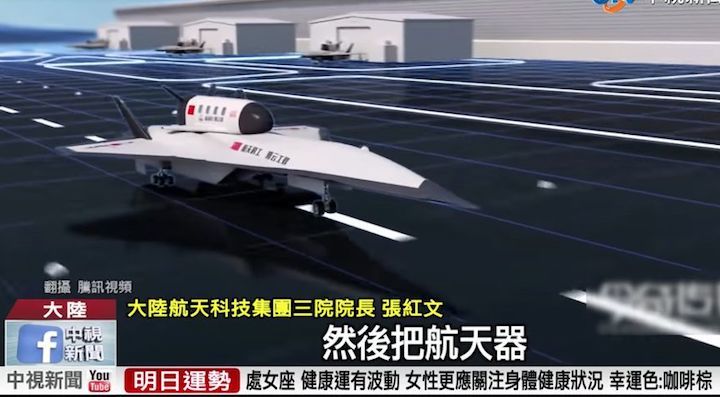
China is reportedly developing a reusable spaceplane capable of delivering cargo to Earth orbit. The unnamed spacecraft appears similar to the U.S. Air Force’s X-37B space plane and likely has the same missions. However, it does differ from its American cousin in some key respects—at least for now.
Chinese state television recently ran a segment describing a new spaceplane under development, comparing it to the American X-37B. Operated by the U.S. Air Force, the X-37B is something of an unmanned space truck, carrying classified payloads into low-earth orbit and staying there for up to 700 days at a time. The X-37B is lofted into orbit by a United Launch Alliance Atlas V rocket using Russian-supplied RD-180 liquid fuel rocket boosters.
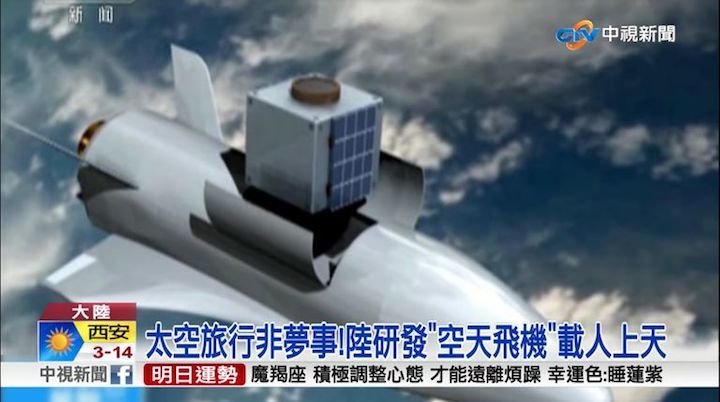
The Chinese spaceplane, by comparison, looks a bit different. It appears to be unmanned and close to the X-37B in both size and basic shape. Unlike the X-37B, the Chinese spaceplane will be carried on the back of what appears to be some kind of supersonic unmanned mothership. Mothership and spaceplane would fly to the edge of space, whereupon the spaceplane would separate and use an onboard rocket engine to reach low earth orbit. The mothership, having released its payload, returns to the spaceport and readies for the next mission.
Another difference is that the Chinese spaceplane appears to carry a smaller payload. This is likely a consequence of the spaceplane needing its own built-in engine to take it the rest of the way into space. The X-37B, by contrast has a relatively small engine designed only for maneuvering in space and de-orbiting.
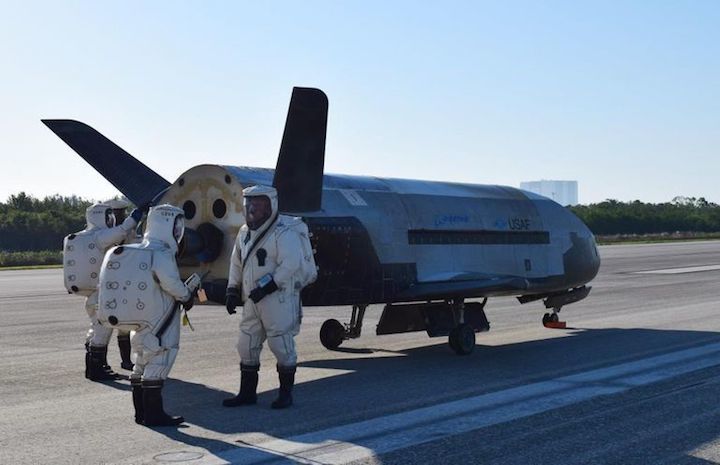
The CGI concept video prompts some interesting questions. Why, for example, does the mothership appear to be some sort of sleek supersonic/hypersonic aircraft with what looks like ramjet engines? Paul Allen’s enormous, awkward-looking Stratolaunch aircraft is also meant to carry small rockets to the edge of space but uses six Pratt & Whitney 4056 engines generating 340,000 pounds of thrust to lumber its way there, not two zippy engines. In other words, it’s not the speed of the mothership, but lifting capacity that counts. Then again, the stealthy mothership could just be artistic license on the part of the animator. (The spaceplane, after all, is depicted with windows.)
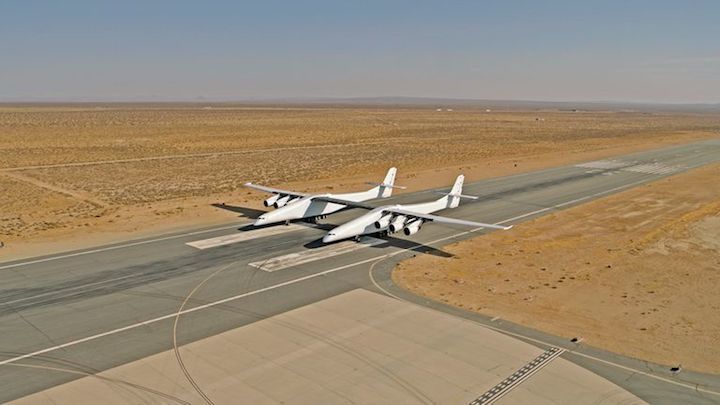
The spaceplane is currently under development by the China Aerospace and Industry Corporation, or CASIC. Globalsecurity.org describes CASIC as a “high tech enterprise” directly controlled by the Chinese government that includes seven research institutes, two research and production bases, six listed companies, and about 600 enterprises and public institutes. It is subordinate to the General Armaments Department, People’s Liberation Army. CASIC’s primary area of expertise is rockets, missiles, and satellites, from satellite-based internet to anti-ship cruise missiles.
The video shows a date of 2030, which is probably about right. China doesn’t have engines capable of supporting a giant Stratolaunch-type aircraft or ramjets for the sleeker option, so whether it goes for one mothership concept or the other this spaceplane is not flying anytime soon. Still, when it does it will enable China to carry out the same sort of missions the U.S. Air Force flies with the X-37B...and all of those missions have so far been classified.
Quelle: PM
---
Update: 19.04.2018
.
Chinese space shuttle flights planned for 2030
Proposed reusable craft would launch from back of a plane

China has put humans into space aboard its Shenzhou spacecraft pictured here, but the envisioned space shuttle would take off horizontally like an aircraft. © Reuters

CHONGQING -- China will have a reusable space shuttle ready for test flights in 2030, the head of a state-owned aerospace company tells Nikkei.
China Aerospace Science and Industry Corp., which also produces missiles and other military systems, aims to build broadband communications networks using low-orbit satellites as well.
"Technological advances have brought space development into the commercialization phase in a range of fields," Chairman Gao Hongwei told Nikkei in a written interview. The company will partner with aircraft maker Aviation Industry Corp. of China and rocket builder China Aerospace Science and Technology Corp. in the country's aerospace push.
Developing a "spaceplane" shuttle -- which can take off and land horizontally, like an airplane, unlike American shuttles that blasted off vertically using rockets -- is one of CASIC's key commercial projects. The company sees the craft carrying out operations including satellite launches, space travel and resupplying space stations.
According to Chinese media, the spaceplane would consist of two winged vehicles: a large carrier for launching and a smaller one for spaceflight, which rides atop the launch craft. The carrier would fly the smaller vehicle to an altitude of 30km to 40km before separating and landing, while its companion would carry on up to space, fulfill its duties and finally return to Earth.
The ability to reuse both craft would significantly heighten CASIC's ability to compete on cost. It is currently researching technologies for parts such as engines and fuselages. The initial goal is to make a craft as capable as or better than the U.S. military's unmanned X-37B shuttle-like vessel, said a source affiliated with the project.
CASIC's other key space projects, which represent an unusual breadth even among global players, involve building communications networks using drones and low-orbit satellites, which would create access in places that would normally be difficult to reach. Such networks can be used for weather observation and natural disaster response, for instance. The company aims to have a constellation of 156 satellites in place and offer broadband service by 2025.

The Kuaizhou 1A, developed by China Aerospace Science and Industry Corp., can launch three satellites at once. (Photo from company web site)
The state-owned company is also ramping up its satellite-launching business. It has successfully launched its Kuaizhou 1A vehicle, which can deliver three satellites at once. That vehicle offers per-kilogram costs far below launch prices in the international market, according to Chinese media. CASIC aims to slash launch prices further -- to about $10,000 or less -- by developing a rocket capable of carrying twice as many satellites as the Kuaizhou 1A.
Reusable space shuttles are a common goal among international space players. U.S. company Space Exploration Technologies, or SpaceX -- fronted by Tesla entrepreneur Elon Musk -- has worked to cut launch costs by making vehicles reusable, and the Japan Aerospace Exploration Agency plans to hold takeoff and landing tests for reusable craft next spring. CASIC aims "to join the top ranks of businesses with global competitive power," said Gao.
But concerns of security, including in the cyber realm, have made many international players wary of dealing with Chinese businesses. CASIC's military ties in particular will probably lead to calls for transparency inmanagement if it is to do more business with foreign companies.
Quelle: Asian Review
5775 Views
